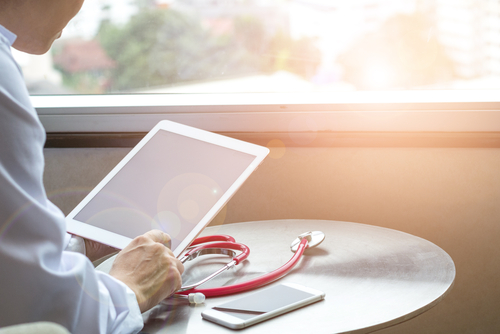The interactive health platform is not really a new concept anymore, and patients have already been monitoring health from home for years. Any device that allows monitoring falls into this category. This could include a traditional blood pressure machine, or the modern heart rate monitoring offered by Apple watches, for example. Until this point, apps have largely been generated so patients can ask questions about their own symptoms. Perhaps a patient would use an app to store information that can be discussed during their next visit to the doctor, or simply to hold private health logs. With over 250,000 electronic health apps globally available to consumers, American Mobile listed seven of the best. They include the following:
- WebMD Pain Coach. An app created by popular online medical site WebMD, this helps people to manage their chronic pain. Triggers and treatments can be assessed by the patient so they can discover what works best for them to combat pain.
- Healthy Heart 2. Developed by Ringful Health, this app allows patients with heart issues to log their own blood pressure, cholesterol and blood glucose levels, along with several other features. The data can be converted into handy graphs to share with a physician.
- Glucose Buddy. This app, developed by Sky Health, is one of the biggest diabetes management apps around. Users are encouraged to log their glucose numbers and insulin dosages and have the information handy on their account for reference.
E-health apps and geofencing notifications
Push reminders are a feature of almost any app, and it is interesting to look at how they work for e-health apps. In the cases described above, the notification would be sent automatically by the app in order to remind a patient to take a certain action, or log some information. For example, Glucose Buddy would send a notification should a user fail to record glucose numbers for a longer period than normal. These health apps so far are heavily reliant on patient input, which means that doctors are fairly limited on how they can actively help their patients from afar. However, there are other solutions that will let the professionals get more involved in the process. Companies like Qolty have developed a geofencing technology named ?Corridor?, that allows doctors to configure a patient?s app to send notifications whenever they enter, or do not enter, a location of interest. Geofencing technology brings a new level of assistance to doctors trying to help patients:
- Locations such as pharmacies can be programmed into the app by a doctor, and notifications can be sent to the patient if they visit, or fail to visit.
- It also helps with locations that are best avoided – if a patient needs to stop drinking alcohol before an operation, it can send a notification of encouragement should it detect that the patient is in a bar.
- Geofencing allows research to be more robust. If a doctor is monitoring a patient for research purposes, a patient could make a visit to another medical center and receive help without telling their original doctor. This would usually make accurate research impossible, but a geofencing app would alert the doctor that the patient has visited another facility.
New geofencing apps like this one can give more control to doctors, and aid them in helping their patient from a distance.
The importance of compliance
It is understandable that some patients may be wary of having their location tracked, but location-based notifications are designed to improve compliance. A patient left to their own devices could more easily choose to ignore a doctor?s orders, but if they are using an app with which their activity is visible to their doctor, they will be more likely to comply. A report by Mayo Clinic found that approximately 50% of patients do not take their medication as prescribed. This is something that really needs to be improved, and e-health monitoring could be one way forward. A number of surveys have indicated that patients are, on the whole, prepared to take these steps to receive more efficient healthcare:
- 66% of patients are ready to adopt e-health and technology into their treatment plan.
- 54% would like to use their smartphone to communicate with healthcare providers.
- Healthcare apps are effective at increasing patient engagement 75% of the time.
Naturally, care must be taken when developing software that tracks a patient?s location and sends push notifications. Patients are likely to have questions and concerns, so as a doctor it is important to be as transparent and available as possible. Also, ensuring that the information provided on the app is digestible for non-medical professionals, is crucial.
Final Thoughts
The goal is to have the patient view the app as something designed to help them, rather than monitor them and keep them to a strict schedule against their will. eHealth is continually transforming the field, and as it continues to evolve, it will continue to provide better options for medical professionals to help their patients.

